Intertextual commentary on Isaiah 28
by koot van wyk (DLitt et Phil; ThD)
Kyungbook National University
Sangju Campus
South Korea
conjoint lecturer of Avondale College
Australia
1 January 2010
The commentary on Isaiah 27-44 and 44-58 was written with my hand notes in 1992. This text is an excerpt of it and what really should happen, is that I have do go through the volumes again and update them with what I know now about the textual theory. Textual theory as applied in this commentary may not be the same today. I do not favor a textual theory that sees all texts, Greek, Latin, Hebrew, Aramaic, Coptic, Armenian, Arabic, Syriacֵ, Ethiopic all on the same basis. They are not. The Hebrew text of the consonantal text of the Masoretic tradition is the very Word of God and all other versions or translations are derived attempts with various degrees of success to come close to that Word. Corruptions and transmission errors through slips of the ear, hand, tongue, memory, and eye can be listed as the origin of these variants. In no way, should any of these secondary texts be placed next to the Hebrew consonantal form and suggest an emendation according to the Septuagint, Targum, Syriac, Coptic, or whatever. The transmission quality of the Hebrew is proven by 4QDana that corresponds 100% or 99% with the Codex Alleppo from 1008 CE. No other translation of the Bible has the same margin of correctness and care. Nevertheless, for the sake of the data, the text is presented as it was composed in 1992. 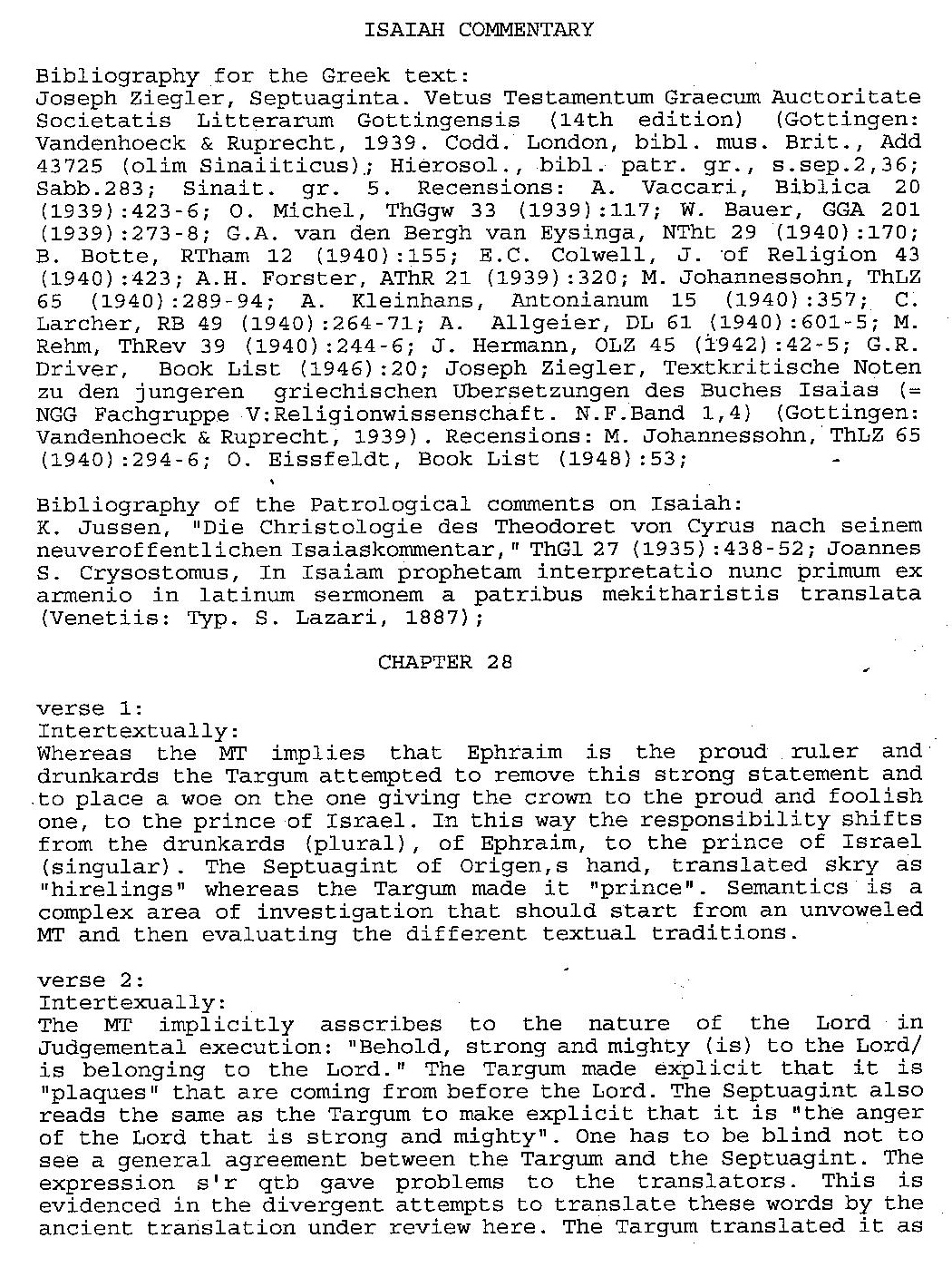
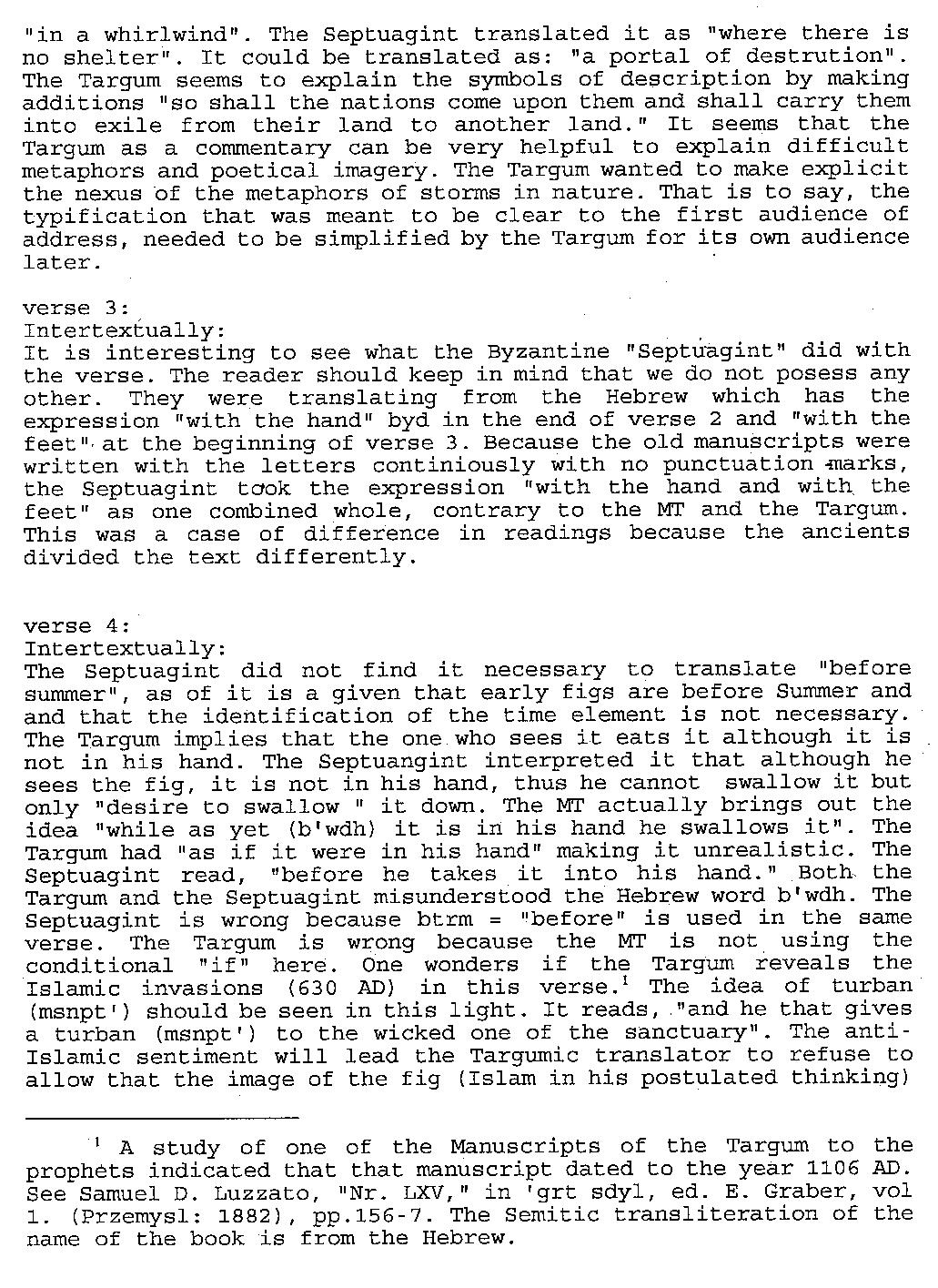
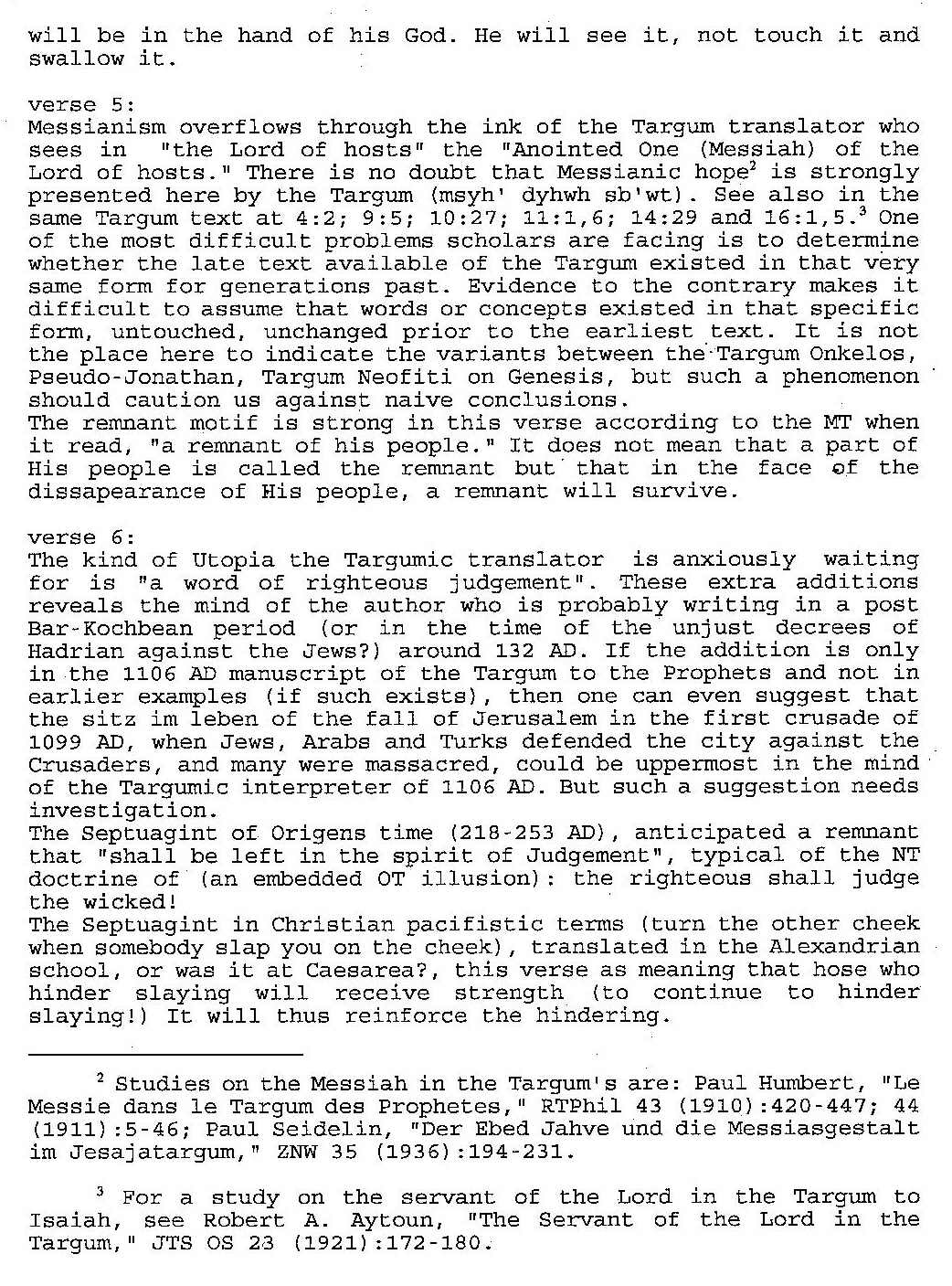
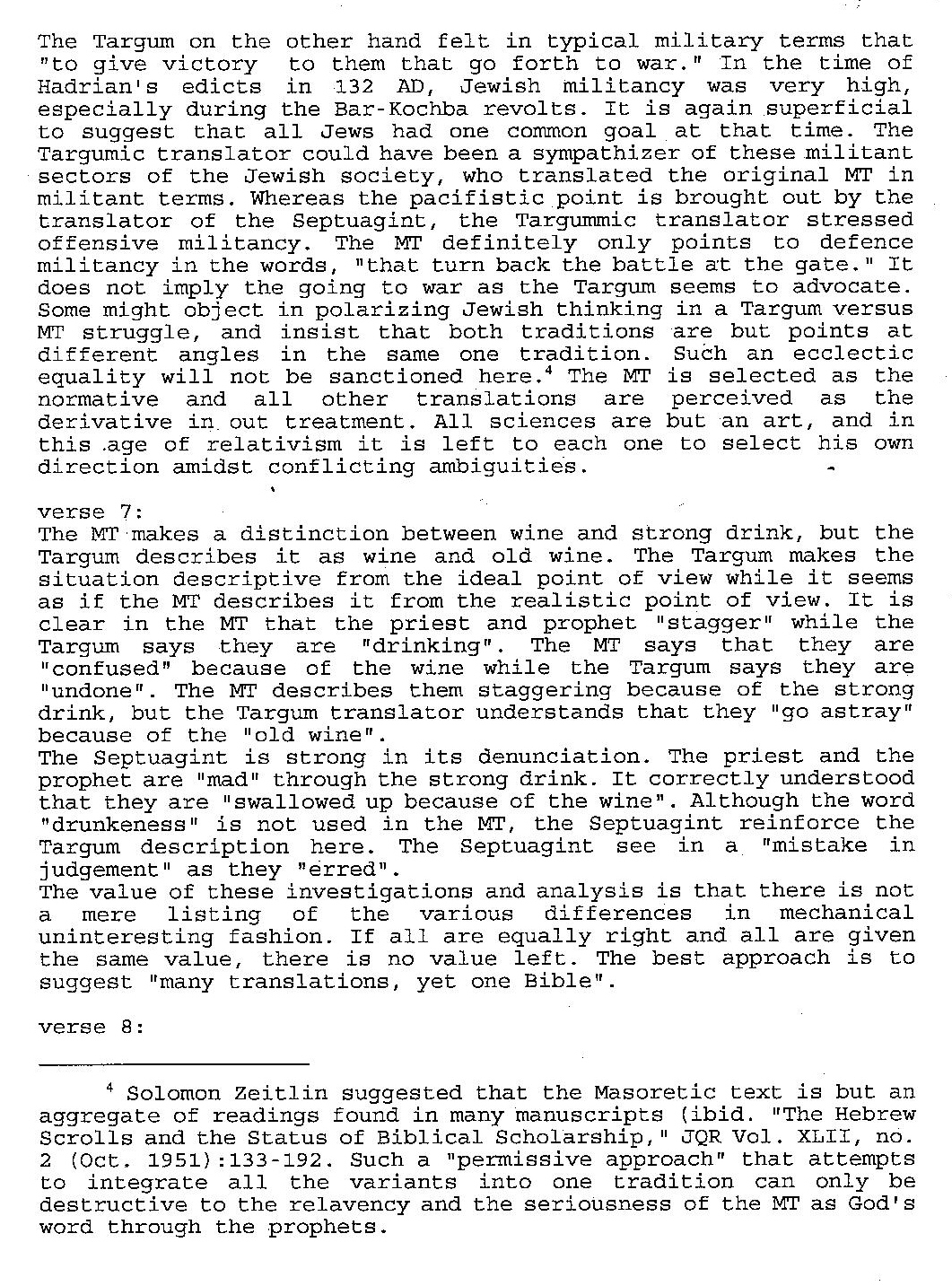
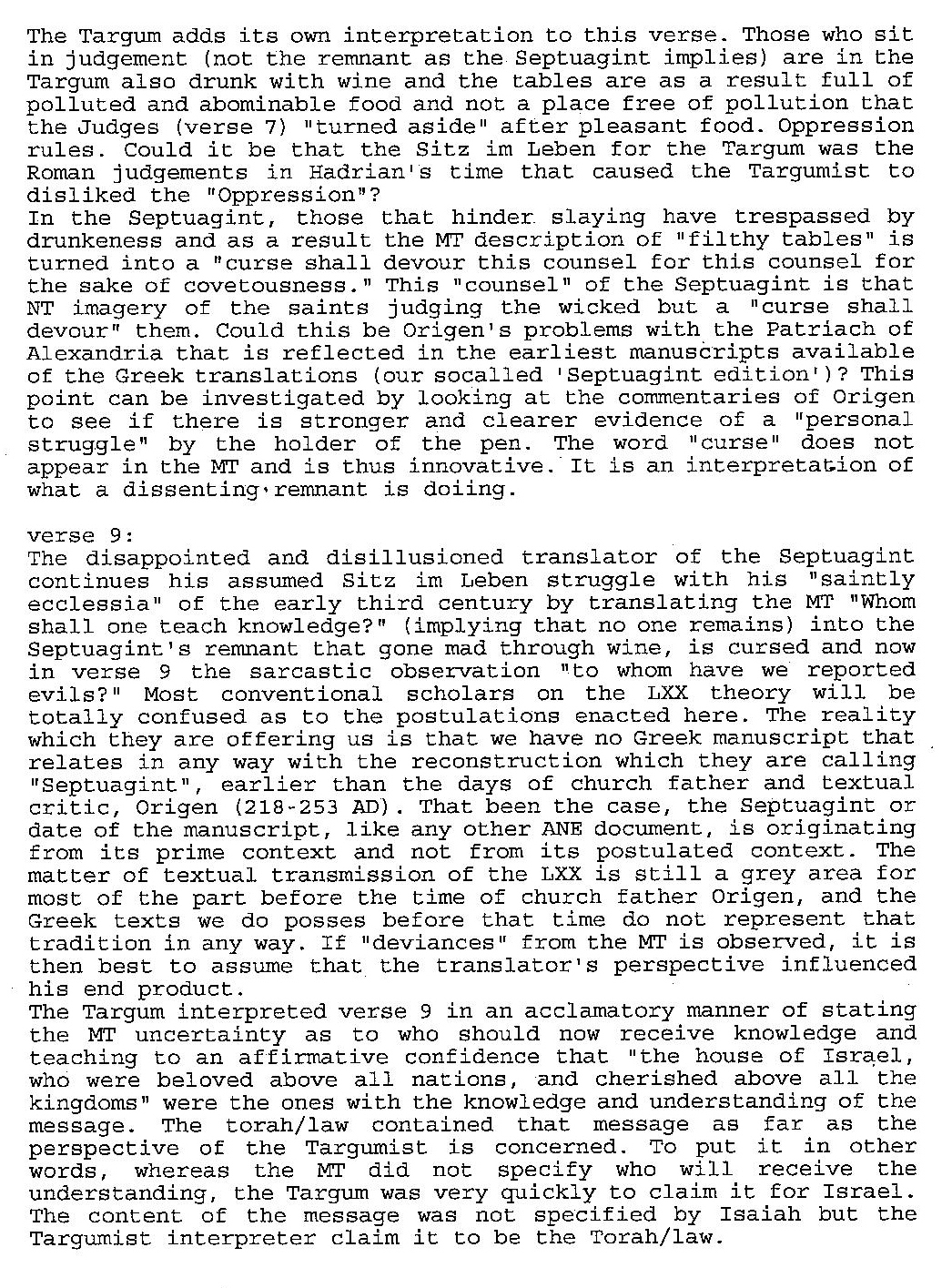
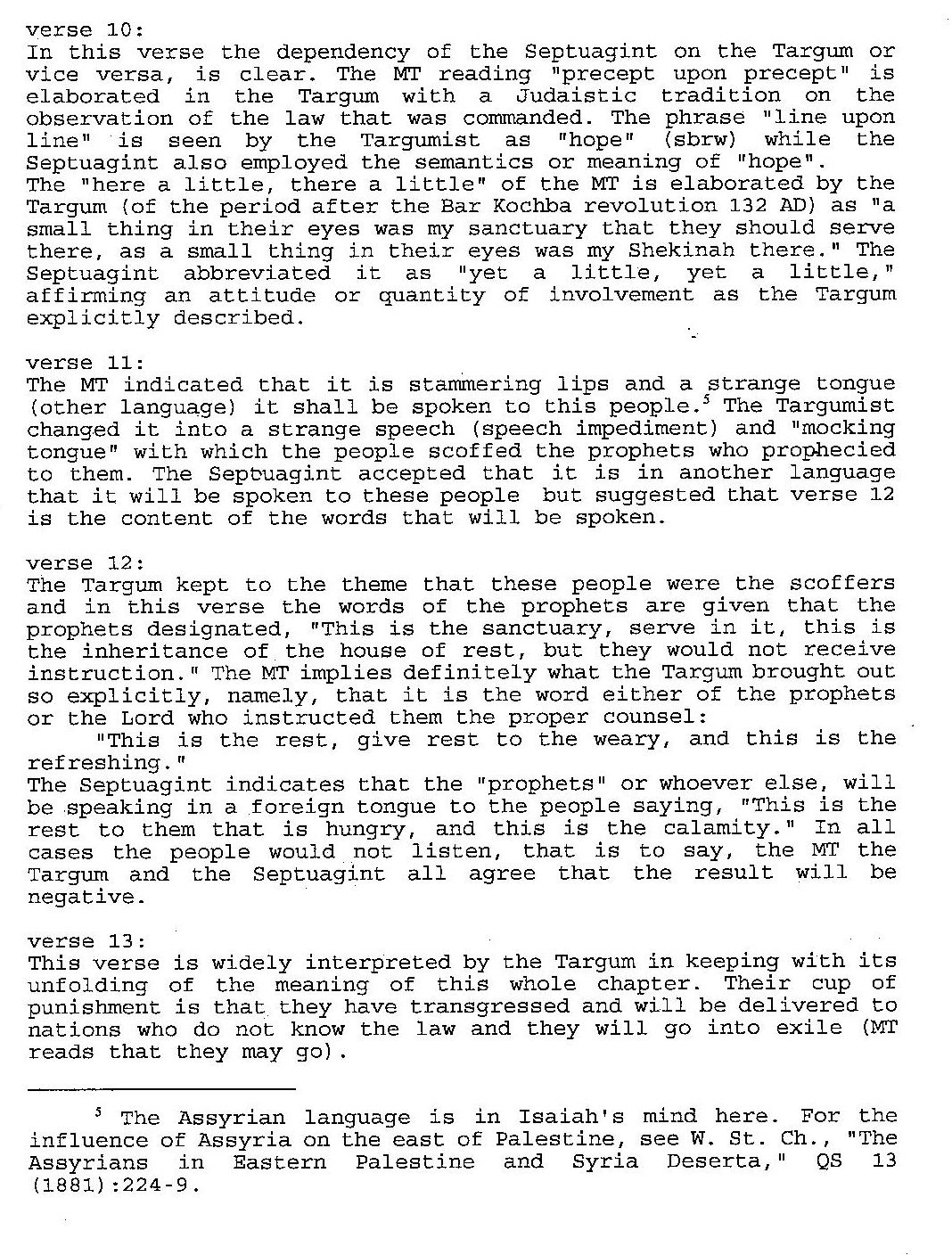
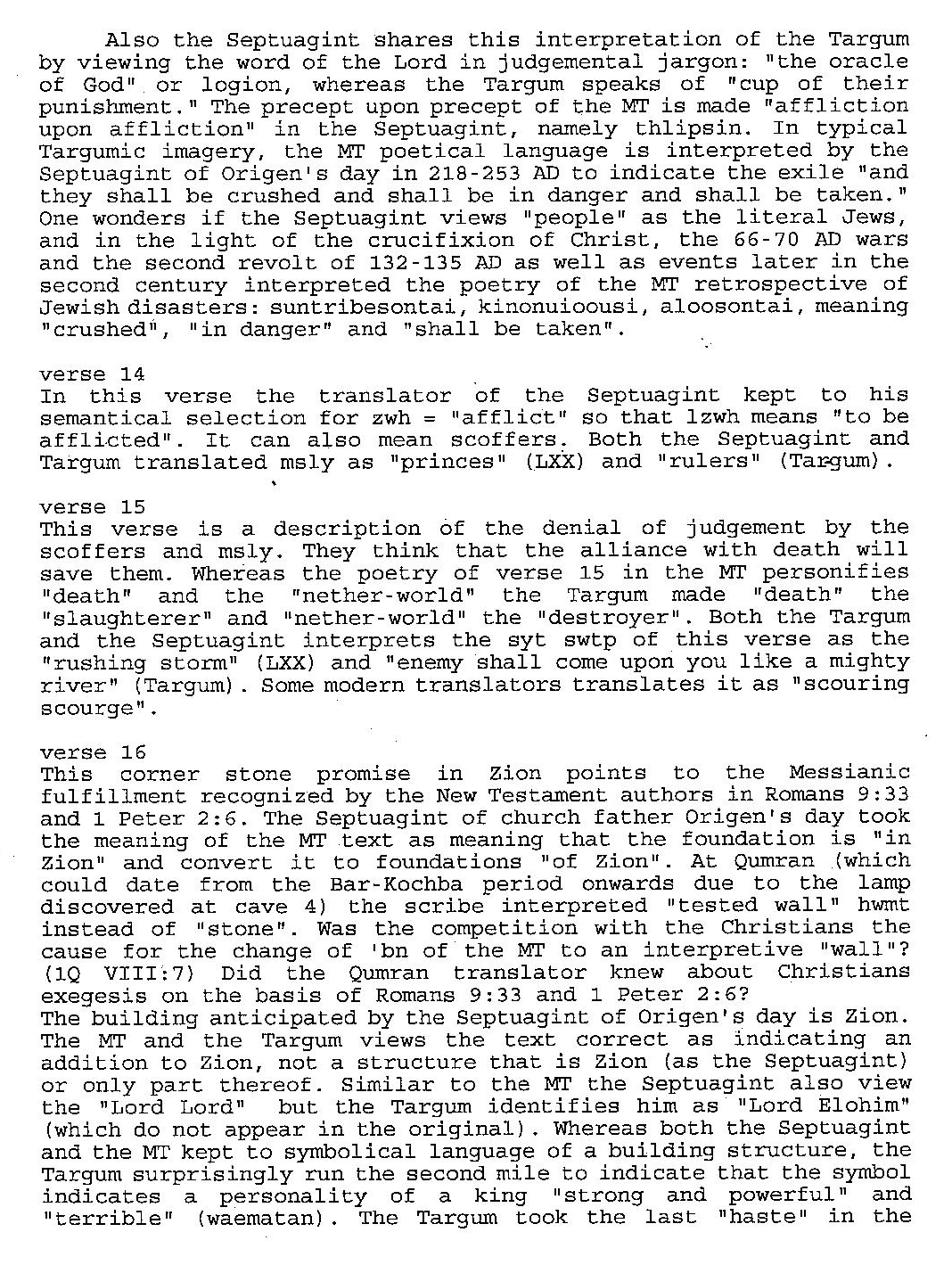
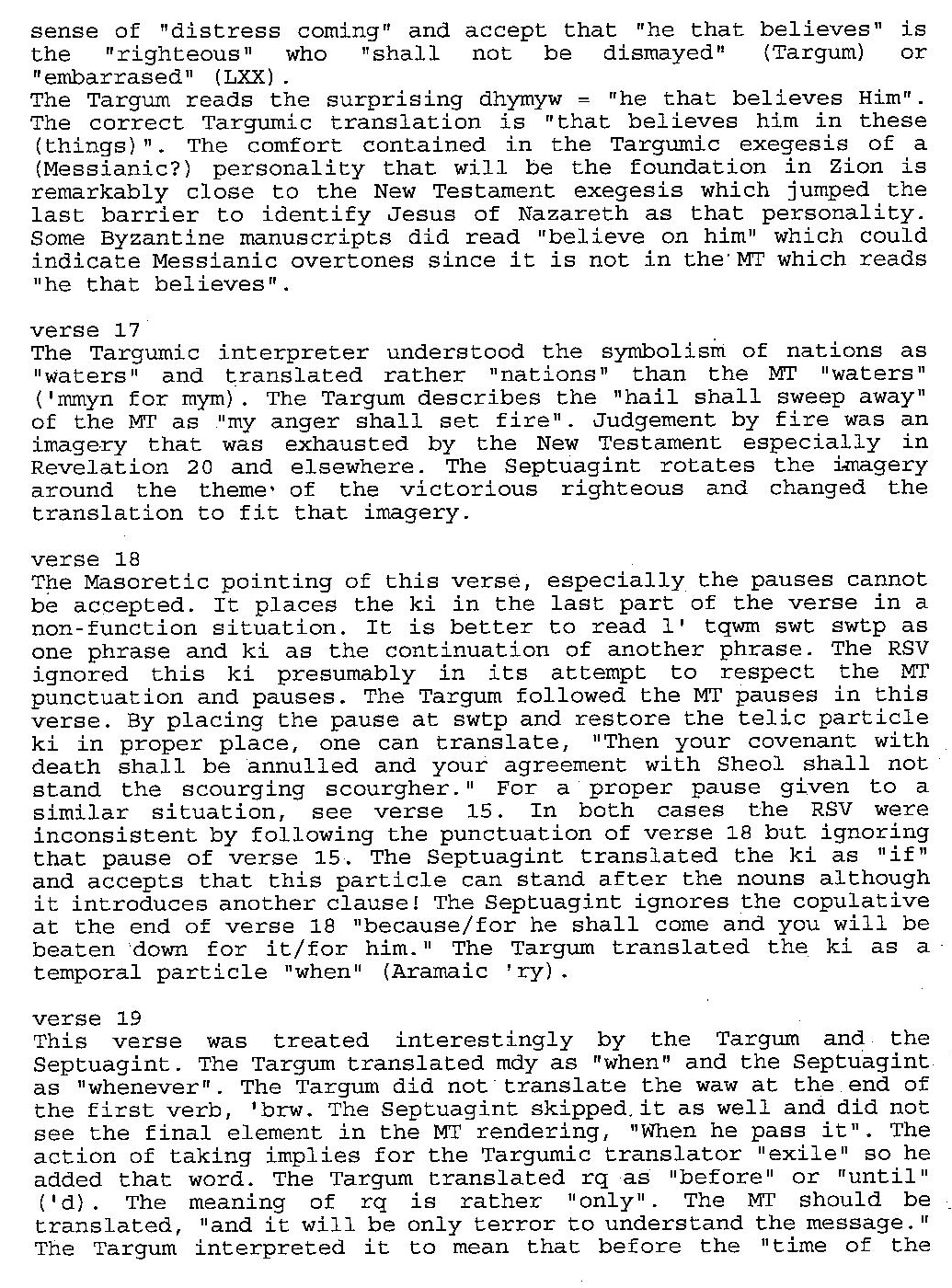
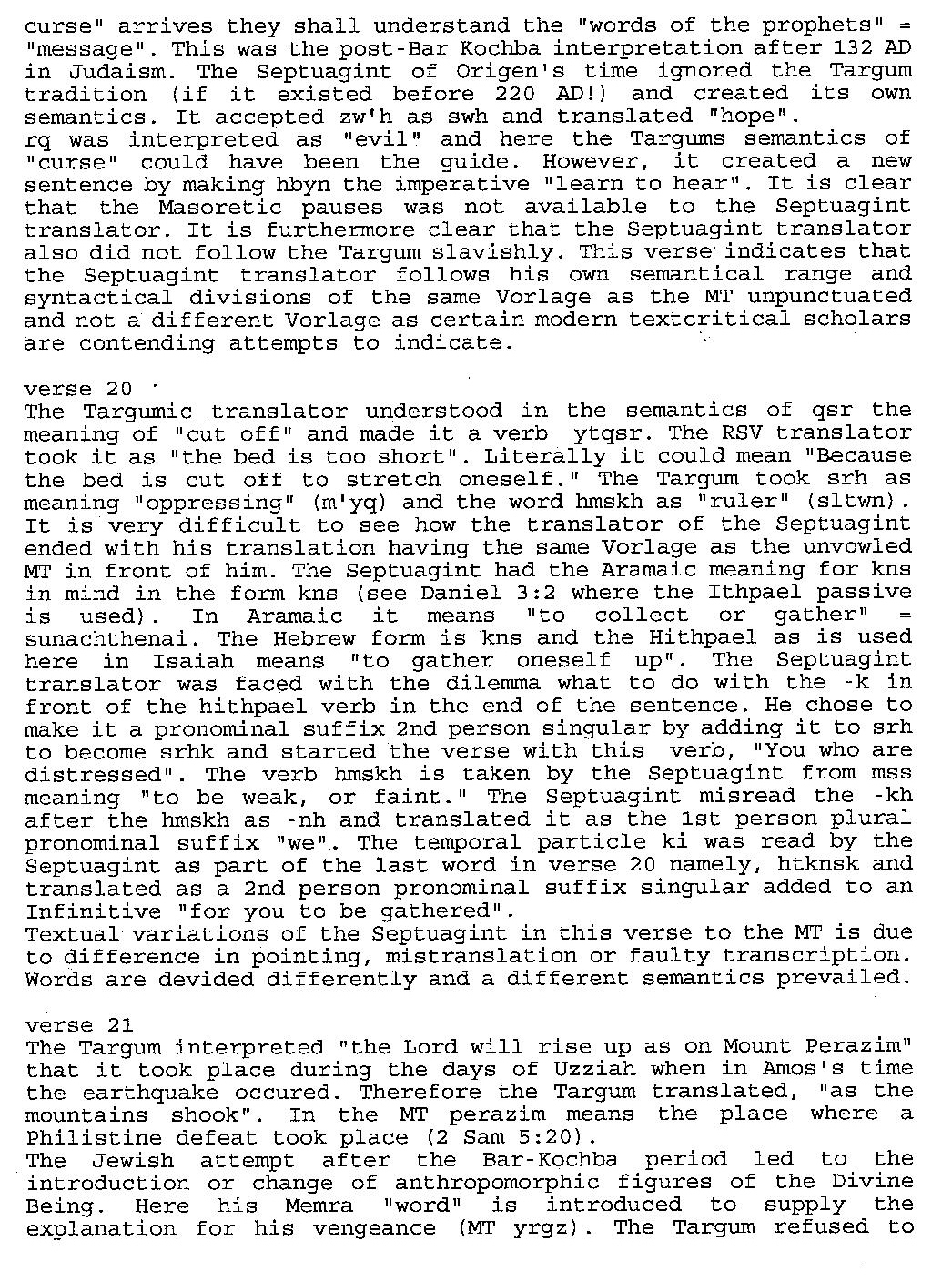
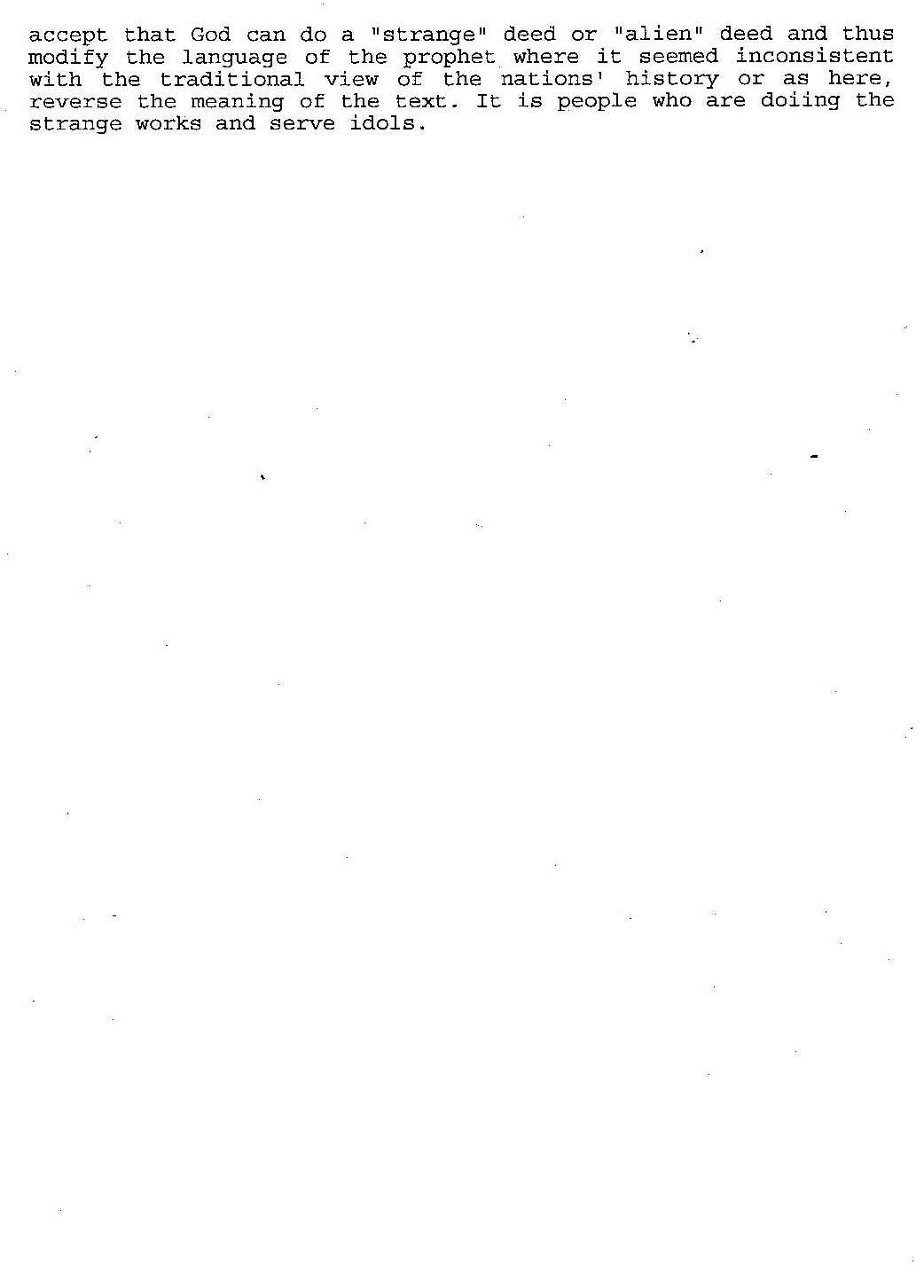
- Intertextual commentary on Isaiah 28 a.jpg (960.7KB)(14)
- Intertextual commentary on Isaiah 28 b.jpg (833.8KB)(15)
- Intertextual commentary on Isaiah 28 c.jpg (976.1KB)(14)
- Intertextual commentary on Isaiah 28 d.jpg (1012.4KB)(18)
- Intertextual commentary on Isaiah 28 e.jpg (1.10MB)(18)
- Intertextual commentary on Isaiah 28 f.jpg (894.8KB)(15)
- Intertextual commentary on Isaiah 28 g.jpg (952.1KB)(17)
- Intertextual commentary on Isaiah 28 h.jpg (1007.3KB)(17)
- Intertextual commentary on Isaiah 28 i.jpg (1015.0KB)(17)
- Intertextual commentary on Isaiah 28 j.jpg (124.3KB)(15)
















